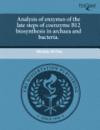 |
|
Behavioral adaptations of Chinook salmon to adverse riverine conditions during their spawning migration in the Klamath River basin
Joshua S Strange
Paperback. ProQuest, UMI Dissertation Publishing 2011-09-08.
ISBN 9781243726155
|
|
|
|
Buy from Amazon.co.uk
|
Publisher description
Biotelemetry and body temperature records of adult Chinook salmon ( Oncorhynchus tshawytscha) migrating in the Klamath River basin from May through October over multiple years were used to investigate the role of behavioral tactics in coping with adverse riverine conditions within the context of run-timing strategies in a single river system. Four distinct runs were identified: Klamath-Trinity spring-run, Trinity summer-run, Klamath fall-run, and Trinity fall-run. During river entry, results did not support the hypothesis that adult Chinook salmon would hold extensively and migrate slowly through the estuarine lagoon with return trips to the sea and use of the salt wedge for behavioral thermo-osmoregulation in response to high summer water temperatures. Passive tidal transport was not observed as predicted and entry from the sea to the estuarine lagoon occurred during all tidal phases suggesting that conserving energy was not a priority for fish during the estuarine phase of their migration. An unexpected finding was that the persistent pursuit pressure of pinnipeds, especially from California sea lions (Zalophus californianus), appeared to negate the suitability of estuarine lagoon as holding habitat. This finding led to the hypothesis that the risk of pinniped predation was primarily responsible for the brief residence (< 24 h on average) and rapid migration (mean 1.2 km/h, 0.42 body lengths/s) of adult Chinook salmon in the estuarine lagoon, especially given its relatively small size (7 km). This hypothesis will be difficult to test without exclusion of pinnipeds. Thermal records of fish that retreated back to the sea after tagging suggested that use of the marine river plume could be important for osmotic adaption to allow rapid migration through estuaries, which often contain concentrations of predators anticipating the return of migrating salmon. Alternatively, use of the marine river plume could have occurred independent of predators. Fish retreating back to the sea should be considered a tagging effect as downstream movement commonly occurs when adult salmonids are released after tagging. There was no evidence of any other tagging effects or biased behavior by fish tagged in this study. Regardless of the reasons, the successful migration of fish that held for weeks in the sea after tagging indicates that there could be considerable flexibility in the river entry timing of some salmon stocks. Upon commencement of upstream migration after a period of thermally induced migration inhibition, mean daily river temperatures ranged from 21.8 to 24.0°C (mean = 22.9°C). During the first week (168 h) of migration, mean average body temperature was 21.9°C, mean average minimum daily body temperature was 20.6°C, and mean average maximum daily body temperature was 23.1°C. Temperatures above these metrics appear to completely block migration in almost all circumstances. During periods of increasing river temperatures, migration was inhibited at lower mean daily temperatures as compared to periods when river temperatures were declining. The ability of adult Chinook salmon to correctly gauge the onset of periods of declining or inclining river temperatures is a vital mechanism for taking advantage of brief thermal windows for upriver migration. Weather fronts were responsible for periods of declining river temperatures, but no precipitation or consistent drops in atmospheric pressure were associated these weather fronts or with fish movements. The associated decrease in light levels, however, appeared to serve as an indicator of impending reductions in river temperatures for adult Chinook salmon. Changing river discharge was found to have a negligible influence on migration behavior and hypoxia sufficient to inhibit upriver migration never occurred during the study (i.e., < 5 mg/L). The upper thermal limits to migration for ad
Similar books
Rate the book
Write a review and share your opinion with others. Try to focus on the content of the book. Read our instructions for further information.
Behavioral adaptations of Chinook salmon to adverse riverine conditions during their spawning migration in the Klamath River basin
Book reviews » Behavioral adaptations of Chinook salmon to adverse riverine conditions during their spawning migration in the Klamath River basin
|
|
 |
 |
|
|
|

